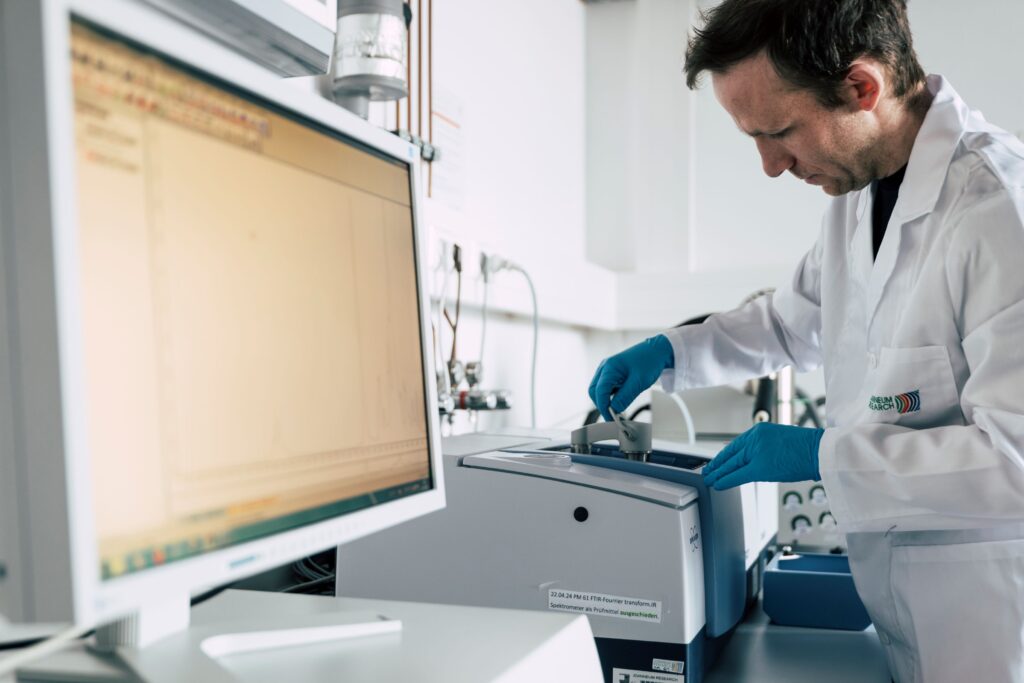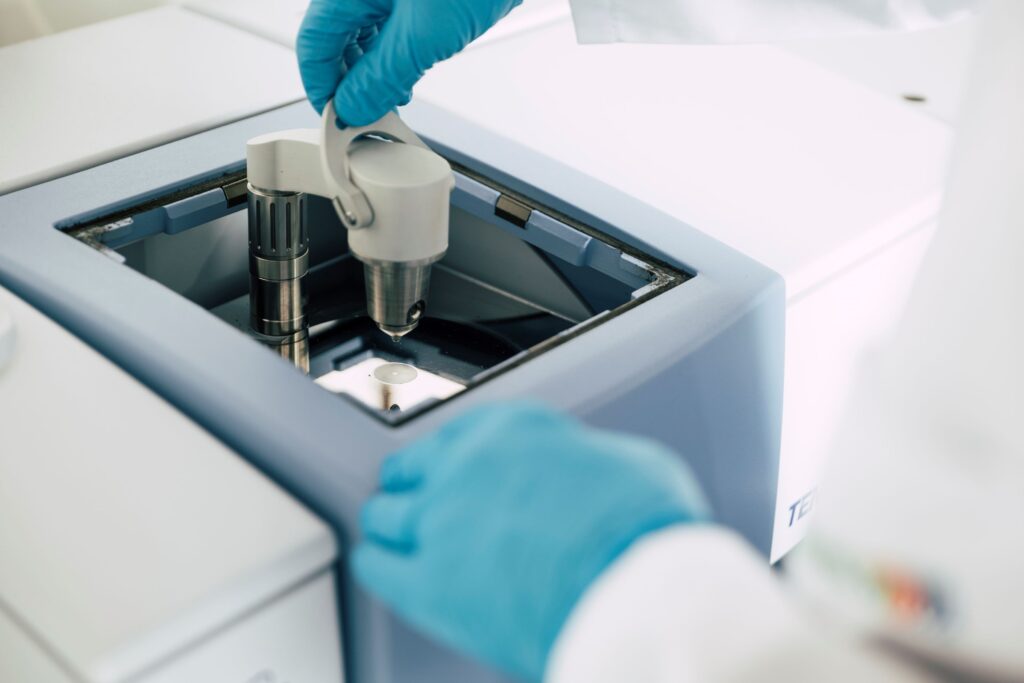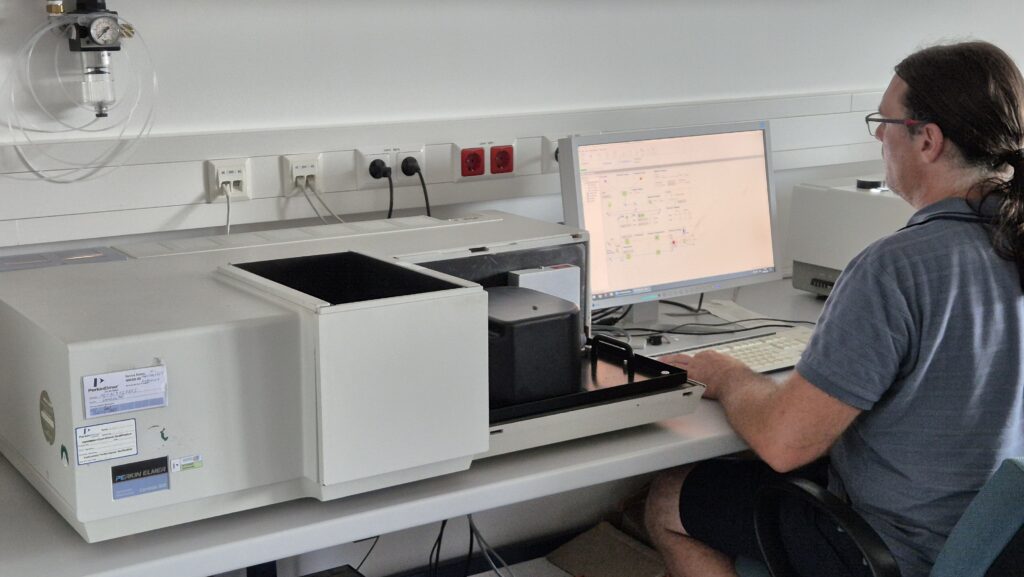UV-VIS-IR Spectrometry
UV-VIS-IR Spectrometry
Devices
FTIR-Spectrometer – Tensor 27 / Bruker
Lambda 900 / Perkin Ellmer
Expected Result
The FTIR technique can confirm the presence of particular compounds or covalent bonds formed during a synthesis which is useful in quality control in materials science, thus aiding in the identification and quantification of substances. Employing an ATR attachment prism this information can be obtained from samples as thin as monolayers on substrates too. The optical properties like reflection, transmission and absorption coefficients in dependency of the wavelength can be extracted for liquid solutions or solids like glass, polymers etc.
Method
Spectrometers measure the wavenumber dependent absorption or transmission of light. Infrared (IR) absorption bands are unique to specific chemicals and their compounds as well as to the vibration modes specific for different binding states.
Case Study
A sample surface is modified by employing a complex synthesis route using an UV photoinitiator. After the process, the quality of the sample is poor. Using ATR FTIR is can be shown that the oxygen inhibited the transfer of the monomers to polymers to a high degree.
FTIR-Spectrometer - Tensor27 / Bruker


Specifications
- FTIR spectrum in the range from 4000-4000 cm-1
- Detection in transmission and ATR configuration (one reflection, diamond crystal)
- Type of sample: translucent samples for transmission measurement-(ideally in slide form)
- For ATR: most bulk samples and also liquids; good contact must be ensured between the measurement crystal and the sample
- FTIR can be coupled with a TGA to test for volatile components as well as break down fragments.
Lambda 900 / Perkin Ellmer

Specifications
- Wavelength Range: 190 – 3300 nm
- Detection in transmission
- Accuracy: +/- 0.08 nm UV/VIS +/- 0.30 nm NIR
- Integrated sphere Option (Range: 200-2500 nm)
- Sample size: 2 x 2 cm² up to 15 x 20 cm²
- Liquid samples are measured in cuvettes
